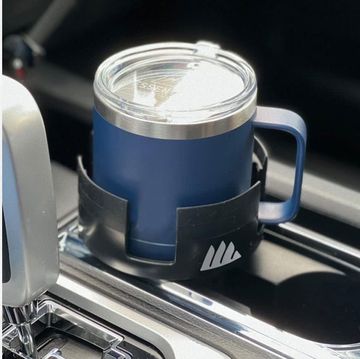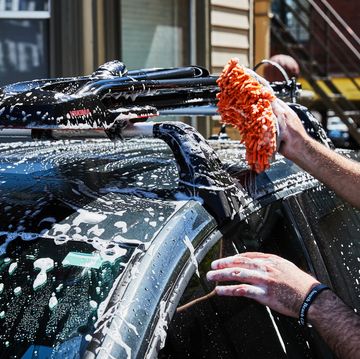There are many myths out there regarding cold-weather driving, so we're here to share the truth about why your car won't start in the cold and other frigid facts.
Why do so many batteries die during the winter?
Winter is tough on batteries for two main reasons. The engines are far harder to turn over because all the oil inside them has turned to molasses. This demands much more current from a battery, and to add insult to injury, that battery cannot produce its normal amount of energy because of the cold.
The chemical reactions that generate electricity are slower at a lower temperatures. The huge current demands of the starter motor—200 to 400 amps—can cause the battery clamps to heat up if the connection at the clamp to post isn't perfect. When the car starts, the connection will cool off. That leaves a poor connection, and a poor connection can prevent the battery from getting fully charged. A discharged battery, unlike one that's fully charged, can freeze, damaging it internally.
That said, while more cars won't start on cold winter mornings, more batteries actually fail during the summer months, when intense heat cooks out the electrolyte, boiling the battery dry.
Does it help to warm up your car at lunch, so it starts easier after work?
If the car starts in the morning after cold-soaking all night, it certainly should start after eight hours parked in the office parking lot. If you've got a garage baby that won't start after a day out-of-doors and needs to be started every four hours, maybe it's time to change the plugs and get it running right.
If you start a cold engine and idle it for ten minutes every day, you stand the chance of diluting the oil with unburned fuel that never gets a chance to burn off. That could cause premature engine wear—not to mention needlessly burning up some expensive gasoline.
Will carrying sandbags in your trunk really improve traction?
Well, that depends on what you drive. Back in the days when the average car was a front-heavy, rear-drive sedan with marginal bias-ply tires, sure, a hundred pounds of ballast might have made the difference to help you crest that snowy hill. Most cars today are front- or or even all-wheel drive, and even today's big rear-drive iron has a better weight distribution and way better radial all-season tires. Ballast in the trunk will only hinder traction on front-drive cars and is likely to make you oversteer on slippery surfaces. If you must ballast your rear-drive car or truck, add the ballast as far forward as possible; you'll still get the traction but not the extra mass so far back.
After a few days of heavy snow, the wiper squirters stopped working. Is it because of sediment in the tank that clogged it? What's the likely cause, and how do you prevent it?
The washer nozzles would freeze right away, not after a few days of subzero temps. And the sediment your aunt is sure is in the reservoir would clog up the nozzles regardless of the temperature. It's probably snowmelt reflux. Normally, there's a check valve in the washer-nozzle line to keep that blue fluid (actually just alcohol and some dye) in the lines after you stop washing the windscreen. If the check valve goes bad, the fluid will run back into the reservoir when you stop running the pump. And it can suck melted snow or ice back into the nozzle. Replacing the check valve usually fixes this.
When it's really cold, the windshield wipers accumulate ice no matter how well I scrape them and even when I have the heat on high, blasting the windshield. Is there anything I can do to prevent this?
Extreme weather can overpower the freezing point of the washer fluid, turning it to slush on your windshield. So, the most important thing is to keep the windshield as warm as possible by turning the defroster on to the warmest temperature setting and highest fan speed. Fresh wiper blades might help, or at least try cleaning the blades that you have of accumulated road film by wiping them with mineral spirits and a paper towel. Treating the windshield with Rain-X will leave less washer fluid on the glass to freeze.
As a last resort, use methyl alcohol instead of washer fluid in the tank. Washer fluid is already 40 percent methyl alcohol and 60 percent water. If you increase the concentration of alcohol, it will depress the freezing point. You can buy methyl alcohol in the paint department of the hardware store, or sometimes you can find it in the housewares section of a big-box store, labeled as fuel for chafing dishes. Just pour it into the washer reservoir.

















